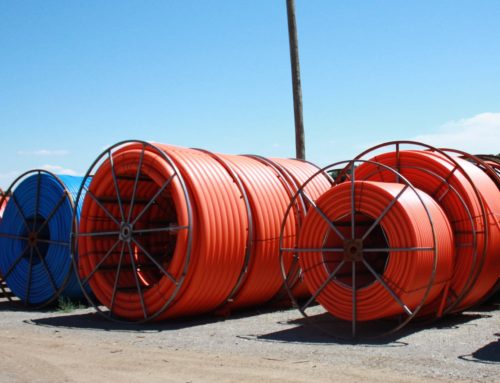BEND RADIUS
The flexibility in polyethylene’s pipe, makes the pipe easy to handle and install. All the major trenchless
installations of polyethylene pipes rely on the pipe’s flexibility to avoid obstacles and handling curvature
in the bore path. HDPE pipes can be bent to a tighter radius than PVC. HDPE pipe radius is about 1/10 th
the radius of PVC pipe.
THE MINIMUM LONG-TERM BEND RADIUS
The long-term bend radius allows the pipe to be curved for several hours or even days during
installation. The thicker the pipe walls, the higher resistance the pipe has to kinking. Note that
considerable force may be required to bend the pipe and the pipe may spring back forcibly if the proper
safety measures are not followed.
DR 7-9 has a minimum allowable bend radius 20 times the outside diameter of pipe. DR 11-13.5 has 25
times the outside diameter and DR 15.5-17 has 27 times the outside diameter of pipe.
MINIMUM SHORT-TERM BEND RADIUS
During installation, HDPE pipes can be bent to a tighter radius for a short amount of time. When
plowing, the minimum bend radius of the pipe through the shoe may be tighter than the long-term
minimum bend radius.
DR 7-9 has a minimum short-term bend ratio of 10, DR 11-13.5 has 13 and DR 15.5-17 has 17.
The bend radius is the measure for curvature in a pipeline. When tightening the curvature of the pipe it
results in a tighter bend radius.
To find the minimum bend radius for polyethylene pipe, see the following equation.
R = a(OD)
R = minimum bend radius (in)
a = minimum allowable bend ratio
OD = pipe outside diameter (in)
a = 25
OD = 1.660
EXAMPLE 1. What is the minimum bend radius for 1.25” SDR 11 pipe?
Solution: R = a(OD) = 25(1.660) = 41.5in = 3.5ft





